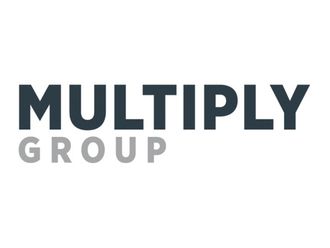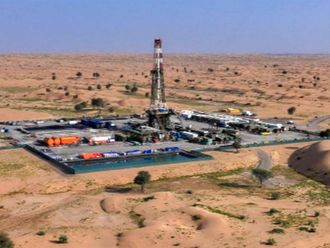Gulf region equity funds rode resurgent stock markets to an asset-weighted return of 11 per cent in the first quarter of this year as risk appetite increased and fund managers took advantage of blue-chip gains, new data released yesterday showed.
This mirrors a global gain in equity funds over the first three months of the year at the cost of the risk-averse money market funds, as economic and corporate performance across the developed world started to catch up with the forecast growth in emerging nations.
Stock markets in the six GCC nations had a positive start to the year after a disastrous fourth quarter last year amid negative corporate news. Forecast-beating earnings news and stronger economic outlooks led share indices higher, with the MSCI GCC gaining 12 per cent in the first quarter after shedding eight per cent in the previous three months.
Worst performer
The first quarter's worst performer was MSCI Bahrain, which remains in the red while the best performance came from MSCI Kuwait which gained 19 per cent driven by positive news from Zain, which lifted most blue chips. MSCI Saudi followed with a gain of 13 per cent for the quarter.
GCC equity funds had an asset-weighted return of 11 per cent for the first quarter as fund managers took advantage of blue-chip gains from earnings momentum and strong economic outlooks, according to data collated by Kuwait Financial Centre, or Markaz.
Both Saudi Arabia and Kuwait funds saw assets under management (AUM) expand in the first quarter by seven and four per cent, respectively.
Overall, AUM were a shade above $12.3 billion at the end of the first quarter, representing an institutionalisation rate (AUM-to-market capitalisation) of 1.6 per cent, Markaz said.
Fund managers continue to favour Saudi Arabia, with an asset allocation of 43 per cent. Confidence in the Kuwait market has declined, from 20 per cent in June 2009 to 11 per cent in March 2010. UAE fund managers followed a similar route, cutting exposure from 17 per cent of assets in September 2009 to 11 per cent in March.
Exposure to equities increased throughout 2009 and into 2010, with a 93 per cent allocation in March, while cash exposure is down to seven per cent on an asset-weighted average, reflecting a higher risk appetite from local and foreign investors.
Saudi Arabia's Tadawul index gained 11 per cent in the first quarter as positive 2009 results, strong econ-omic outlook and healthy oil prices boosted the market. Banking, agriculture and petrochemicals stocks led the index higher, gaining 13.7, 13.2 and 12.7 per cent, respectively, for the quarter. AUM expanded seven per cent to $5.08 billion.
Fund managers maintained their exposure to equities at 98 per cent in March 2010 versus a low of 96 per cent in June 2009, while allocation to cash and equivalents increased to two per cent from December 2009's one per cent.
The Kuwait market gained eight per cent for the quarter after two consecutive quarterly declines. Gains were led by industrials and services, which rose 12.5 and 12.2 per cent, respectively, on the back of positive news flow from Zain Telecom. AUM expanded four per cent to $3.9 billion at the end of March.
After losing six per cent in the last three months of 2009, Qatar's stock index gained 7.23 per cent in the first quarter of this year.
Stocks fuel optimism
The optimism was led by banking stocks, up 11.6 per cent, after the central bank lifted a ban on local banks from trading on the exchange. AUM for Qatari equity funds were flat at $156 million.
The Dubai Financial Market (DFM) underperformed the Abu Dhabi Securities Exchange (ADX) for the quarter, gaining 2.2 per cent versus a gain of six per cent on the ADX.
The DFM's gain was led by banking, up 5 per cent for the quarter, while insurance and financial services shares lost 1.9 and 0.4 per cent, respectively.
Abu Dhabi's gain was led by telecoms, up 13.6 per cent. Liquidity in the UAE was down; value traded declined 39 per cent from the previous quarter to $10.68 billion. AUM for UAE equity funds continue to contract, declining three per cent at the end of March to $592 million.
The Muscat Securities Market (MSM) gained 5.16 per cent in the first quarter after losing 3 per cent in the previous three months. AUM for Omani equity funds dropped to $58 million as the Oman Gateway Fund was retired.
The Bahrain exchange gained 6.1 per cent in the first quarter, recouping the previous quarter's loss. Sectoral returns were mixed, from a gain of 22 per cent for commercial banks to a loss of 6 per cent for industrials. SICO Selected Securities Fund outperformed the benchmark, the MSCI Bahrain index, which lost 3.86 per cent in the first quarter.












